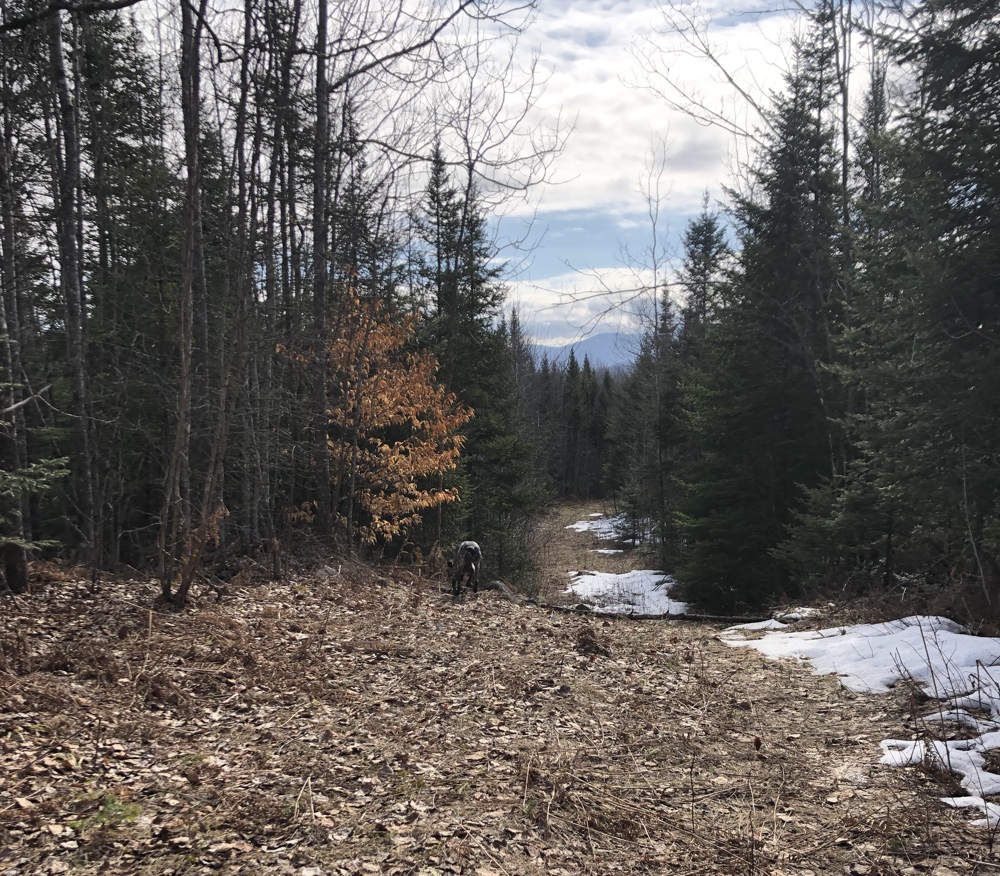
Grouse On The Brain
There are constants in this sea of change, however. Hunting dogs, wild birds and the grouse woods all remain what they always were - a reminder of great days, partnership, wildness and most importantly, a refuge from the current state of craziness. As many of you know, I usually start light training, "Spring Training" if you will, my dogs in April, prior to the grouse and woodcock nesting seasons here in northern New Hampshire. Once May hits, we will stay out of the woods for a few months so as not to bother nesting hens and their broods of fledgelings. We'll get back at it in August and September to prepare for the rigors of October.
The woodcock are back in some numbers in our northern coverts, and our grouse have always been here, having survived another northern New England winter. This winter wasn't what we would consider a "tough" one ... it was mostly mild and we had a smattering of -20 below weather. There was a fair amount of snow, particularly in December and February, so the birds undoubtedly got some good snow roosting in.
So far, spring has shown a gradual melt of our snowpack and the weather has been temperate. The critical time for our northern birds is always May and the first couple weeks of June however, so we will hope for good temps and weather at that time which would be the complete reverse of last year's cold temps and deluge of rain.
Bode and Rosie have been getting more work in these sessions, as we try to preserve some of the tread on Monty's (10 years old) tires. He had an interesting run this morning, missing the one woodcock that we moved, but then having a solid point on a skittish grouse captured on video. Unfortunately, I stopped the video about ten seconds short - the bird went up about fifty yards away - he had obviously been through this rodeo before.
Bode has worked close and hard but only managed to find three woodcock in his runs this week, and Rosie showed a lot of fire in her run a few days ago. Curiously, she blew through one woodcock and a grouse to then have points on a tight sitting woodcock and two points on grouse in heavy cover. Way to come back, Rosie.
One thing that is always a challenge in these first sessions is getting used to walking in the grouse woods again. I like to think grouse woods and their pleasure to walk in on a scale, with a "10" being a beautiful regenerating early successional forest with closely manicured walking paths through it, and a "1" being a nearly impenetrable thicket of spruce and alder, a veritable"Roman wilderness of pain" as Jim Morrison said. First of all, those who have gone out with me before know that "10" does not exist, at least in northern New Hampshire and Vermont. "1" is usually something my clients will never see, but our strolls this week were definitely anywhere in the "1" to "3" range - tough going for man and dog alike. My hat seemed to be on the ground more often than it was on my dome. Never mind the rocky, uneven ground and blackberry cane nipping at me ... man, I love grouse hunting.
Stay healthy everyone ...
